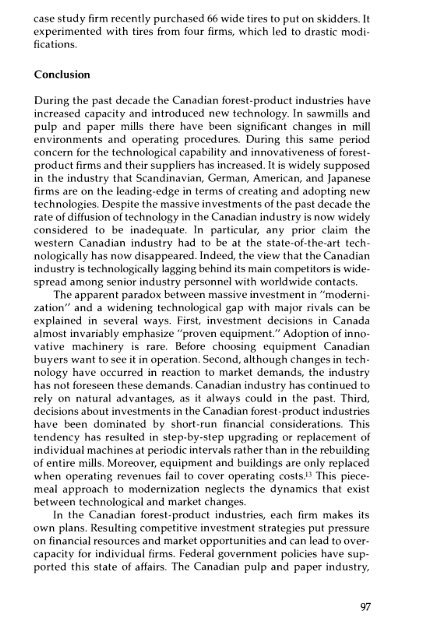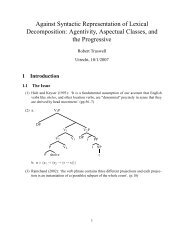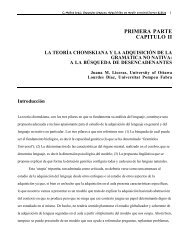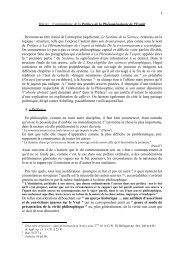Technology and the Canadian Forest-Product Industries ... - ArtSites
Technology and the Canadian Forest-Product Industries ... - ArtSites
Technology and the Canadian Forest-Product Industries ... - ArtSites
You also want an ePaper? Increase the reach of your titles
YUMPU automatically turns print PDFs into web optimized ePapers that Google loves.
case study firm recently purchased 66 wide tires to put on skidders. Itexperimented with tires from four firms, which led to drastic modifications.ConclusionDuring <strong>the</strong> past decade <strong>the</strong> <strong>Canadian</strong> forest-product industries haveincreased capacity <strong>and</strong> introduced new technology. In sawmills <strong>and</strong>pulp <strong>and</strong> paper mills <strong>the</strong>re have been significant changes in millenvironments <strong>and</strong> operating procedures. During this same periodconcern for <strong>the</strong> technological capability <strong>and</strong> innovativeness of forestproductfirms <strong>and</strong> <strong>the</strong>ir suppliers has increased. It is widely supposedin <strong>the</strong> industry that Sc<strong>and</strong>inavian, German, American, <strong>and</strong> Japanesefirms are on <strong>the</strong> leading-edge in terms of creating <strong>and</strong> adopting newtechnologies. Despite <strong>the</strong> massive investments of <strong>the</strong> past decade <strong>the</strong>rate of diffusion of technology in <strong>the</strong> <strong>Canadian</strong> industry is now widelyconsidered to be inadequate. In particular, any prior claim <strong>the</strong>western <strong>Canadian</strong> industry had to be at <strong>the</strong> state-of-<strong>the</strong>-art technologicallyhas now disappeared. Indeed, <strong>the</strong> view that <strong>the</strong> <strong>Canadian</strong>industry is technologically lagging behind its main competitors is widespreadamong senior industry personnel with worldwide contacts.The apparent paradox between massive investment in "modernization"<strong>and</strong> a widening technological gap with major rivals can beexplained in several ways. First, investment decisions in Canadaalmost invariably emphasize "proven equipment." Adoption of innovativemachinery is rare. Before choosing equipment <strong>Canadian</strong>buyers want to see it in operation. Second, although changes in technologyhave occurred in reaction to market dem<strong>and</strong>s, <strong>the</strong> industryhas not foreseen <strong>the</strong>se dem<strong>and</strong>s. <strong>Canadian</strong> industry has continued torely on natural advantages, as it always could in <strong>the</strong> past. Third,decisions about investments in <strong>the</strong> <strong>Canadian</strong> forest-product industrieshave been dominated by short-run financial considerations. Thistendency has resulted in step-by-step upgrading or replacement ofindividual machines at periodic intervals ra<strong>the</strong>r than in <strong>the</strong> rebuildingof entire mills. Moreover, equipment <strong>and</strong> buildings are only replacedwhen operating revenues fail to cover operating costs." This piecemealapproach to modernization neglects <strong>the</strong> dynamics that existbetween technological <strong>and</strong> market changes.In <strong>the</strong> <strong>Canadian</strong> forest-product industries, each firm makes itsown plans. Resulting competitive investment strategies put pressureon financial resources <strong>and</strong> market opportunities <strong>and</strong> can lead to overcapacityfor individual firms. Federal government policies have supportedthis state of affairs. The <strong>Canadian</strong> pulp <strong>and</strong> paper industry,97
















